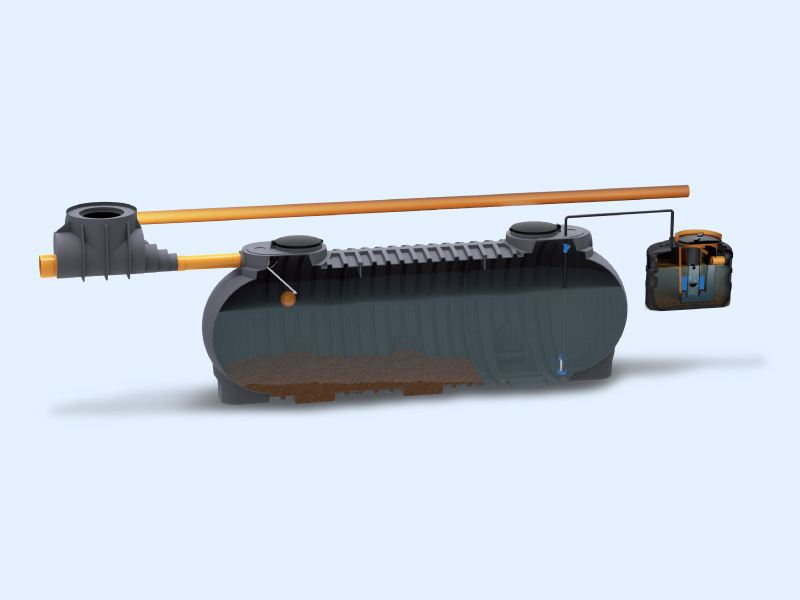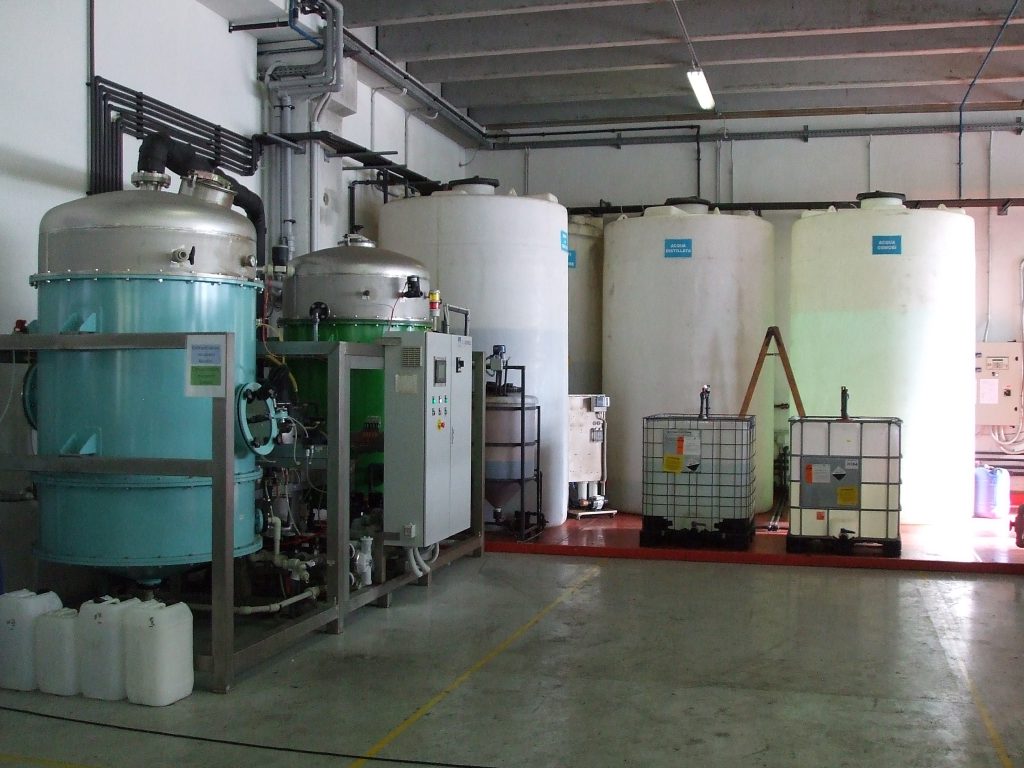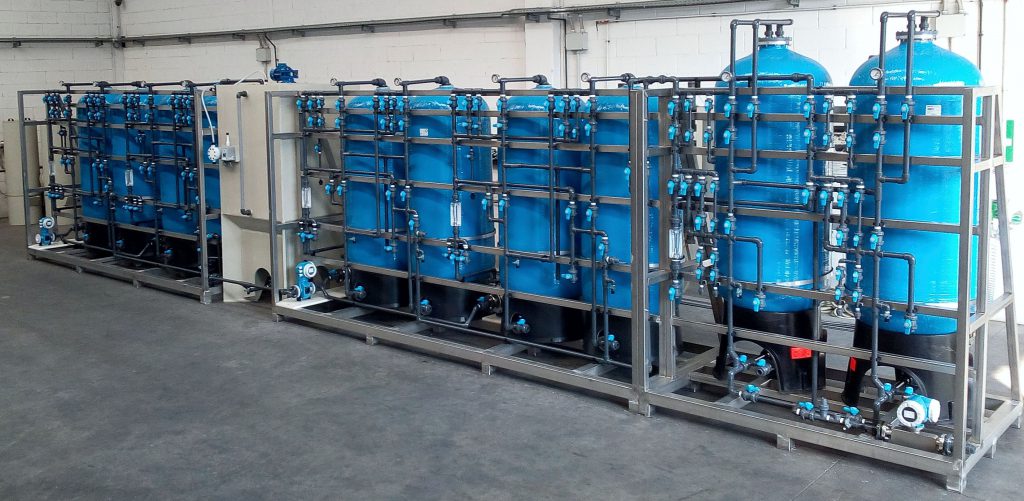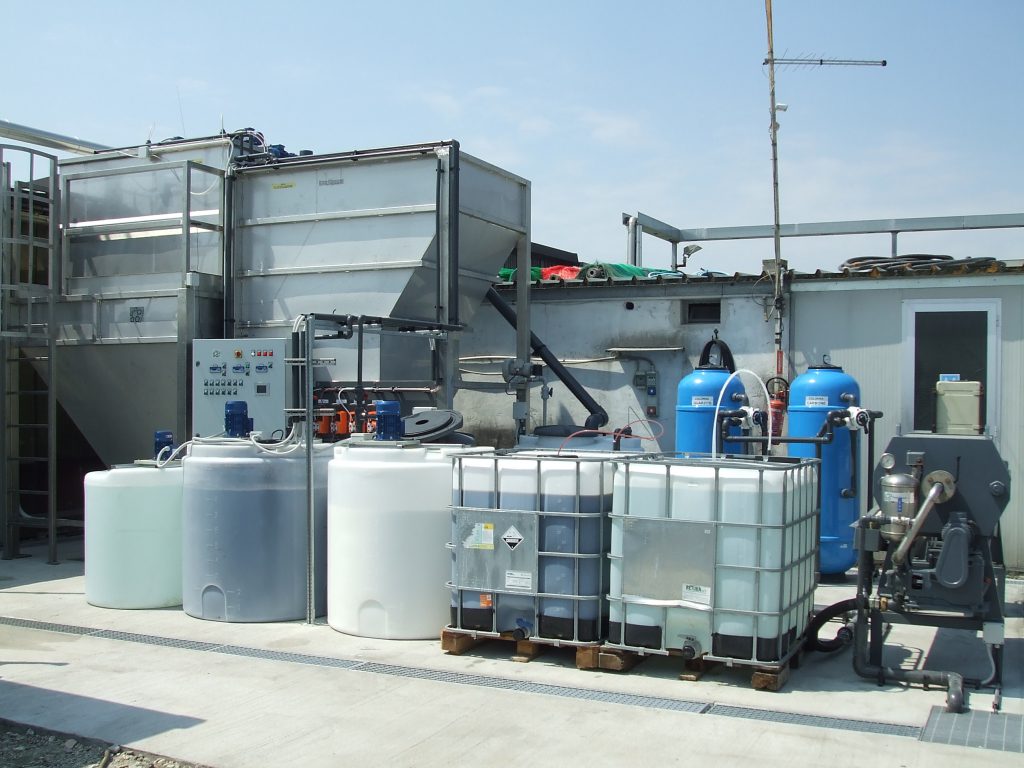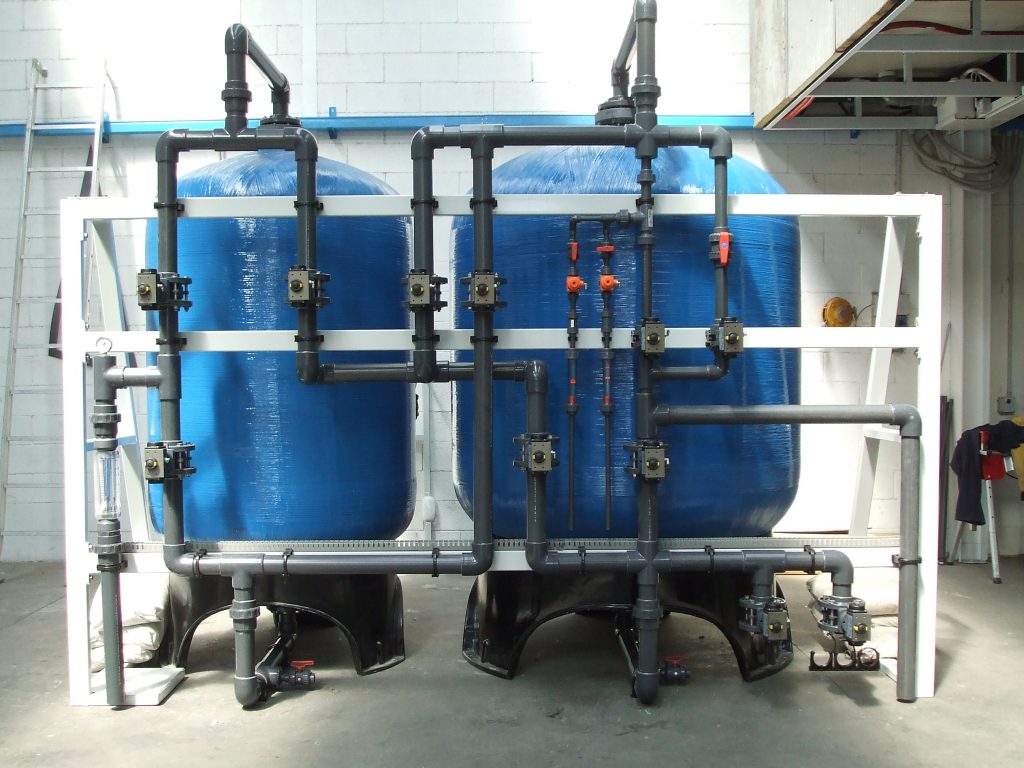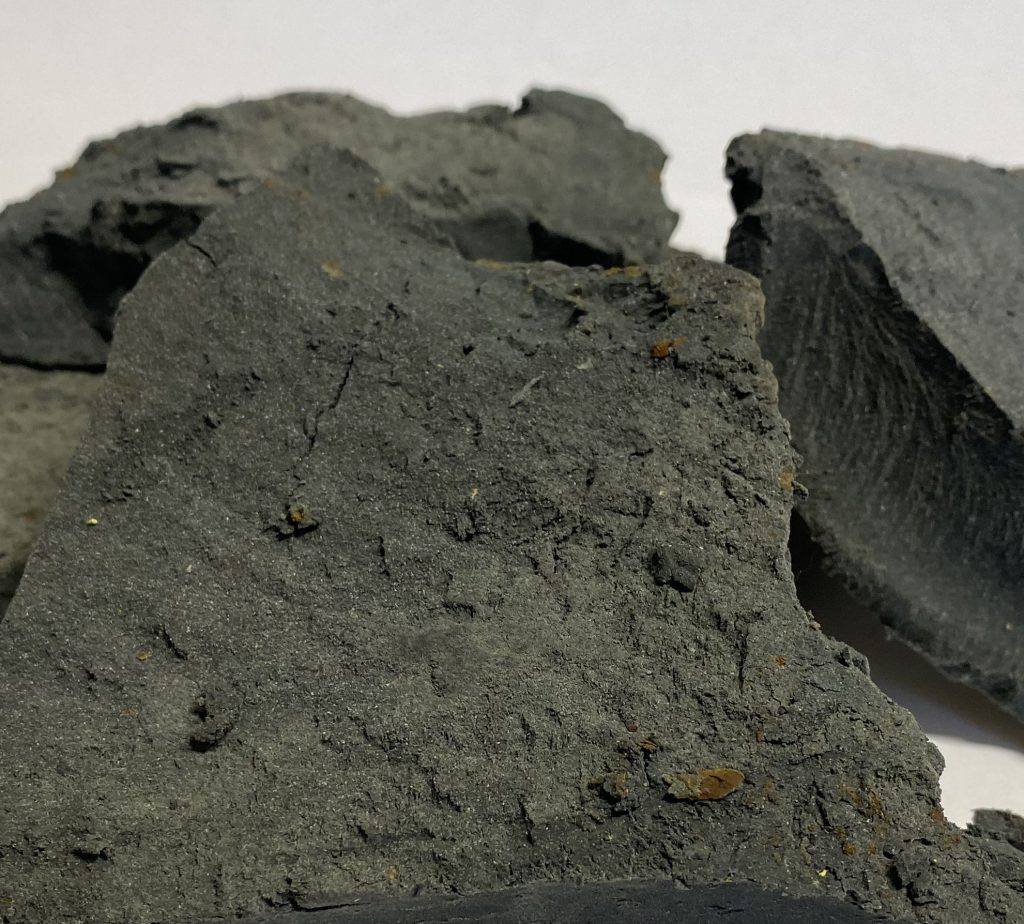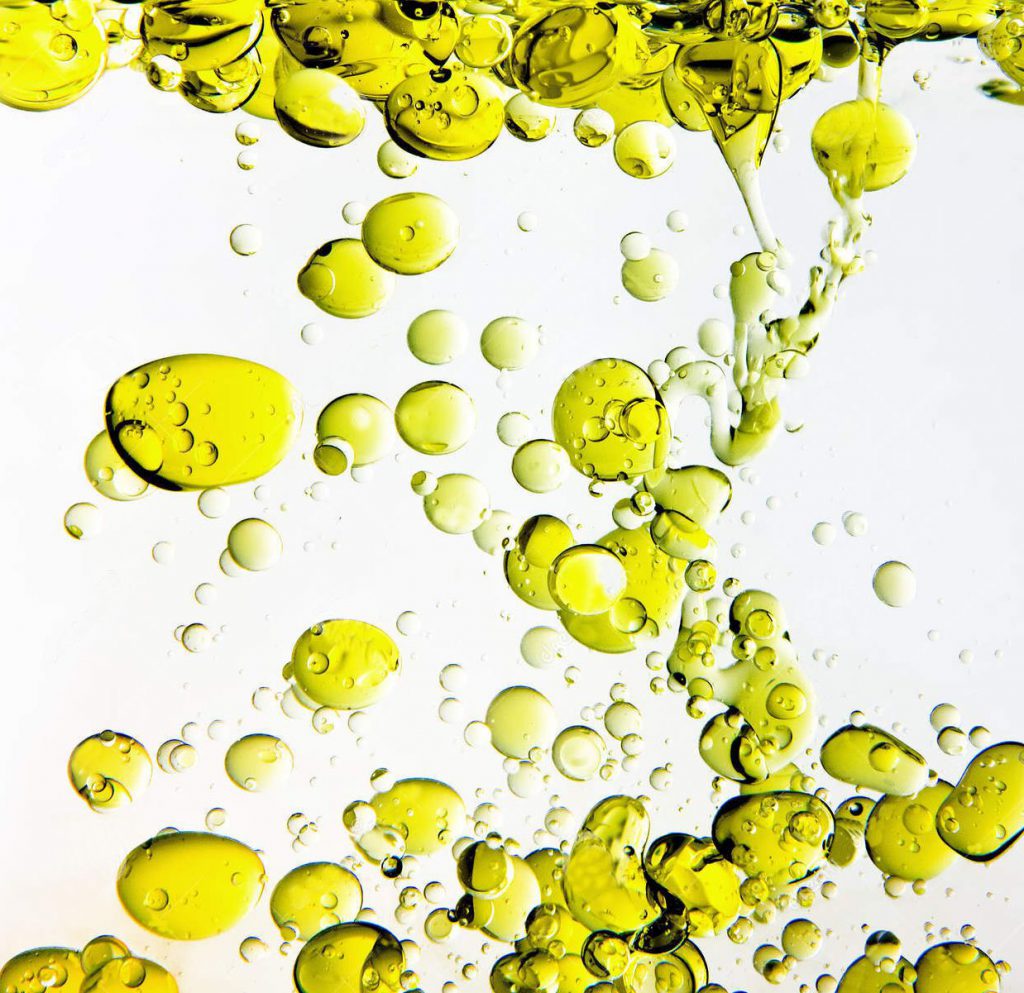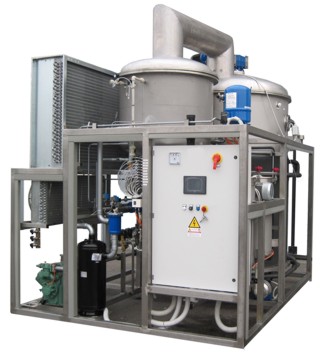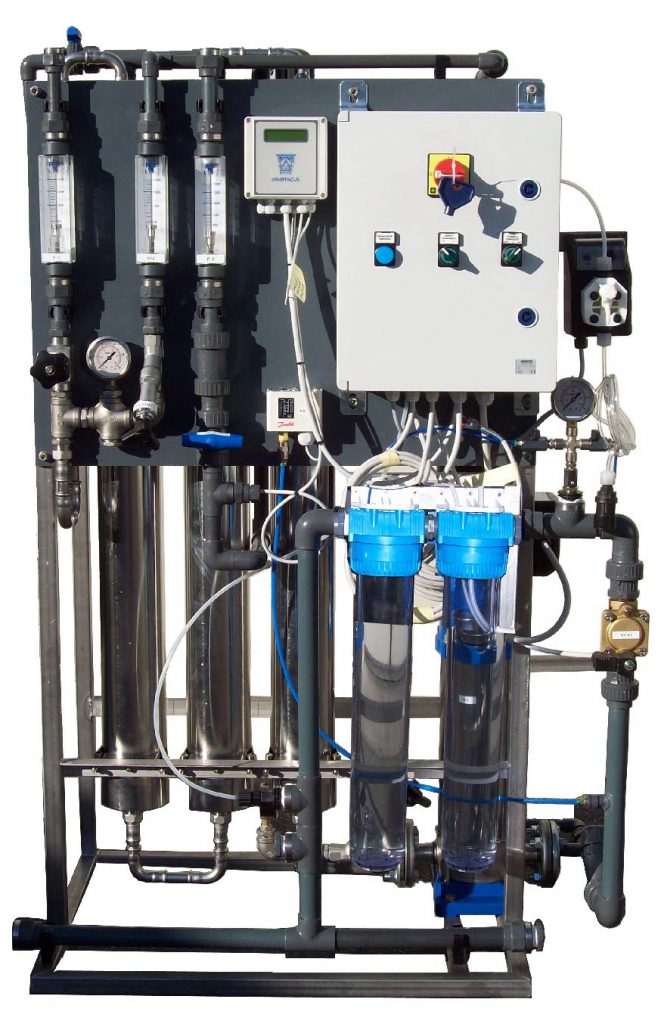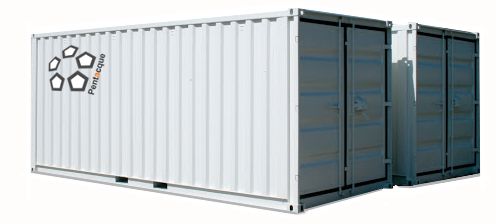Pentacque builds a diversified series of first rainwater treatment plants.
First rain or runoff systems are essential to control the polluting effect of rainwater due to the runoff of partially or totally polluted surfaces. The term “first rainwater” refers to the initial part of rainwater collection. This volume of water has some characteristics of pollution that, according to the regulations, every meteoric event that has occurred for at least 48 hours without atmospheric events must be treated up to the maximum volume represented by a precipitation of 5 mm uniformly distributed over the surface of the entire draining area.
The pollution produced by the runoff of rainwater is essentially due to the presence of sand, soil and light mineral oils, as well as a number of dissolved, suspended and colloidal substances, which sometimes include heavy metals, organic and inorganic compounds.
These substances can be transported into water bodies and pollute them if not previously treated with appropriate first rain systems.
The first rainfall plants are dimensioned with reference to the coefficients provided for by the relevant regulations, guaranteeing the accumulation volume necessary for the treatment, until the moment when the following second rainfall waters are touched and sent to the final receptor by dispersion on the ground or sent directly to the receptor body.
The legislation that regulates the treatment system for first rain water provides for a series of appropriate treatments to ensure the respect and protection of ecosystems. The directives are as follows: European Directives 2000/60/EEC
Water Framework Directive and 91/271/EEC concerning urban waste water treatment.
The yards affected by rainfall must be suitably prepared to facilitate the conveyance of the same in a single point where the first rain system will be placed.
The continuous commitment and the evolution of the design has led to the creation of a line of first rain systems with a series of superior qualities compared to traditional systems. These first rain systems are entirely made of corrugated polyethylene; the particular shape guarantees extreme resistance to crushing and at the same time to the pressure of the water inside. These first rain systems are not affected, unlike concrete structures, by deterioration and do not present hydraulic losses over time, which can occur, even osmotically, in traditional concrete tanks.
Another feature that makes these first rain systems technically superior to those made of concrete is that they are supplied in a single Monoblock already hydraulically and electrically wired. The outdated plants made of concrete are normally built and supplied because of their weight in several pieces; after being positioned individually they must be interlaced with each other. Another advantage is the transport logistics and the easy positioning of monobloc plants.
These first rain systems are also cheaper already in the purchase phase, if they are compared with those made of concrete.
The treatment of first rain water is made up of a series of sections, the plants, depending on the size, provide a well for the collection of incoming water; this well also has the task after the collection of first rain water to convey the second rain water to the discharge or subsequent treatment; the second section of the first rain plants common to all is the collection and storage of the first more polluted water.
From this storage always present in the first rain systems, an electric pump takes the water in a controlled way and sends it to a section where heavy and polluting substances are defanged. Thanks to an optimal sedimentation time, this stage is completed by deoiling; here the first rain water undergoes a flotation of all light substances.
Our first rain systems apply a coalescence filter pack to improve the deoiling system. This system invites the oil microparticles to adhere to a particular coalescent material (aggregation effect) and, after joining together, they increase their size (coalescence effect), favoring their flotation and surface stationing.
Thus treated, the first rain water is sent to fall in an inspection well before advancing purified to the drain.
First rain systems can be equipped with floating absorption filters inserted in the supernatant section of the drain; these filters have the task of absorbing the small and possible oil leaks that may occur during deoiling, thus improving the purification processes.
The wastewater treatment plants have the possibility of using mechanical shutters which enable or not the entry of the first rain water; depending on the level of the storage tank, as an option if required, it is also possible to install meteorological event detectors and the automation of the subsequent management of the first rain water. The first rain systems as an option can mount a density detector and can be applied in the oil containment section to alarm the maximum level of their storage.
In case of installation of first rain tanks, in particular companies that have the possibility to pollute more the areas and yards where the first rain water is collected, the system must be completed with mechanical and absorbent filtration using pressure filters and electric pumps; this filtration ensures a high retention of pollutants and guarantees the limits of the tables in force.

